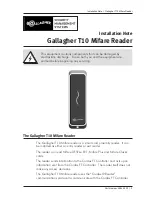
11. Power Management > Power States
97
PEB383 User Manual
July 25, 2011
Integrated Device Technology, Inc.
Confidential - NDA Required
11.3.9
Device Power States
The PEB383 supports the PCIe PCI-PM D0, D3Hot, and D3Cold (no Auxiliary power) device power
management states. The bridge does not support the D1 and D2 power management states.
11.3.10
D0 State
D0 is divided into two distinct sub states: the uninitialized sub-state and the active sub-state. When
power is initially applied to the PEB383, it enters the D0_uninitialized state. The bridge enters the
D0_active state when either of the following is set by system software:
•
Memory space enable
•
I/O space enable
•
Bus Master enable
11.3.11
D3
Hot
State
A device that is in the D3Hot state must be able to respond to configuration accesses so that it can be
moved to the D0_uninitialized state by software through configuration. Once in the D3Hot state, the
device can later be transitioned into the D3Cold state by removing power from the device. D3Hot is a
useful state for reducing power consumption by idle components in an otherwise running system.
Once the PEB383 is programmed to the D3Hot state, it initiates L1 entry process. The NO_SOFT_RST
bit in the
“PCI Power Management Control and Status Register”
is set to 1 in the PEB383 when
software programs the bridge back to the D0 state. L1 exit can be initiated by the PEB383 or an
upstream device.
11.3.12
D3
Cold
State
The PEB383 transitions to the D3Cold state when its power is removed. Re-applying power causes the
device to transition from the D3Cold state into the D0_uninitialized state. The D3Cold state assumes
that all previous contexts are lost, so software must save the necessary context while the device is still
in the D3Hot state. A power-on sequence with its associated cold reset transitions the PEB383 from the
D3Cold state to the D0 uninitialized state. Software must perform a full initialization of the PEB383 in
order to restore the function to its D0 active state.
















































